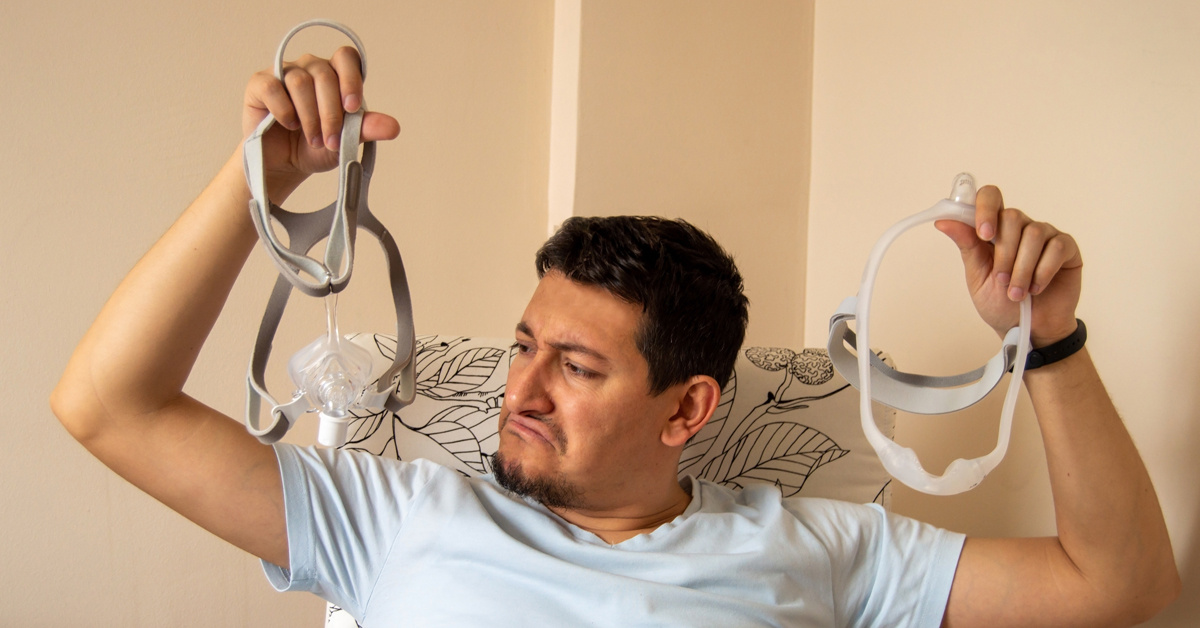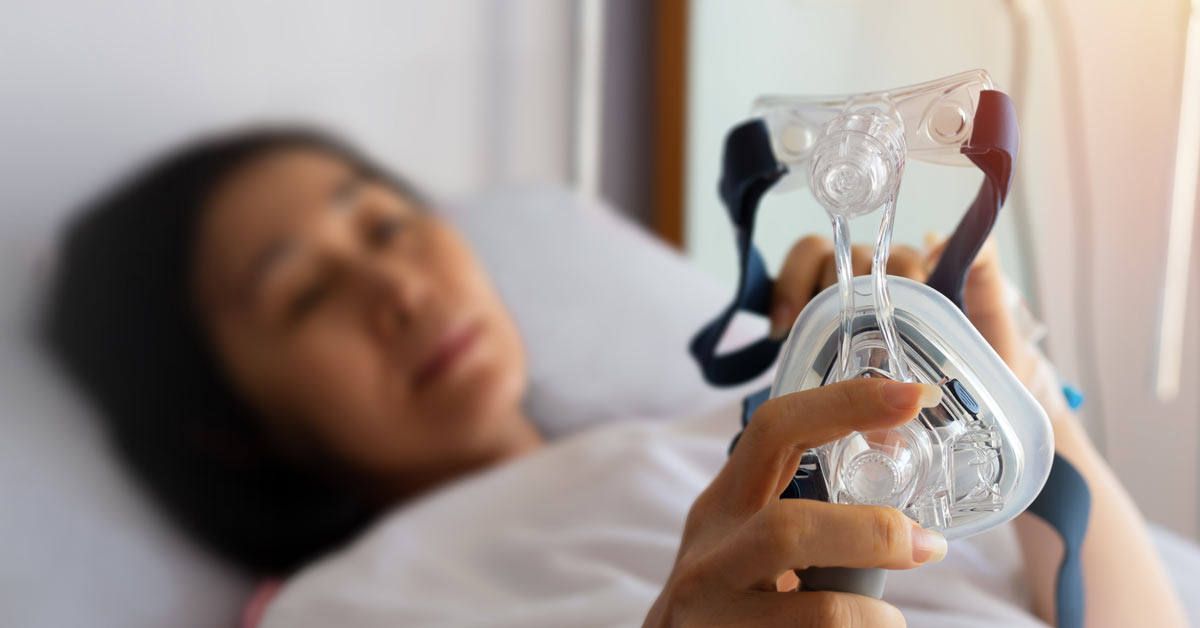It’s common. It’s unpleasant. But it can be managed!
Many people with COPD (chronic obstructive pulmonary disease) experience a buildup of thick, sticky mucus in their airways, which can make breathing harder and increase the risk of infection.
It’s a very common, very unpleasant problem. But there are ways to manage it.
Lesley Williams, Apria’s Market Clinical Trainer and a registered respiratory therapist, says, “The first step to solving the problem of excess mucus is to understand what it is and why it occurs.”
What Is Mucus?
Mucus plays an important role in trapping inhaled irritants, such as viruses, bacteria, fungi, dust, and chemicals.
Then, the tiny hairs that line your airways called the “cilia” go to work. In a wave-like fashion, they efficiently carry the mucus containing the irritants upward and into your throat, where they can be coughed up before entering your lungs.
Why Does Mucus Accumulate In Your Airways?
COPD can inflame airways, which may increase mucus production. Chronic lung conditions and a history of smoking can also damage or destroy the cilia.
An excessive amount of mucus—especially thicker mucus—is even more difficult to remove from your airways.
The result: greater risk of infection and lung irritation as well as disruption in airflow, causing chest tightness and shortness of breath.
The good news: a variety of proven methods can clear mucus from your airways.
Coughing Methods to Clear Mucus
Coughing is an excellent way to remove mucus from the airways. Two methods are most often recommended by healthcare professionals.
Huff coughing
This technique helps you cough up mucus without tiring you out. Here’s how to perform the huff cough:
- Take a seat and lean forward
- Inhale through your mouth, taking in a slightly deeper breath than normal
- Use your stomach muscles to exhale through your mouth in 3 even breaths
- As you do, make the sound “ha, ha, ha”
- Repeat until you feel the mucus loosen in your lungs
Controlled coughing
This technique uses your stomach and chest muscles to help clear mucus.
- Take a seat, lean forward, and wrap your arms around your stomach
- Inhale deeply through your nose, then exhale through pursed lips
- As you do, press your arms against your stomach muscles and cough 2-3 times in short, sharp breaths
- Repeat until you feel the mucus loosen in your lungs
Active cycle of breathing technique (ACBT)
This combines different coughing techniques to move air into both the small and larger areas of your lungs.
- Gently inhale through your nose and exhale through pursed lips 6 times to relax your chest
- To move air into the small areas of your lungs, inhale deeply and hold for 3 seconds, then exhale slowly
- Use the huff cough technique to clear mucus out of the larger areas of your lungs
- Repeat this final step until mucus has been coughed up
At-Home Methods to Clear Mucus
Stay hydrated
Water helps thin mucus. Try to drink at least 6-8 glasses a day.
Exercise
Moving your body helps move mucus from your lungs. Speak with your doctor before you begin an exercise program.
Practice postural drainage
This technique uses gravity to clear mucus. It can be performed sitting or lying down. Your healthcare team can show you the best methods for postural drainage.
Quit smoking
Smoking increases the amount and thickness of mucus. Research shows that nicotine also interferes with the effectiveness of the cilia.
Reduce your dairy intake
Dairy products such as ice cream, milk, or cheese can make mucus thicker.
Stay up to date with vaccines
They help reduce the risk of such lung infections as flu and pneumococcal pneumonia.
Doctor-Prescribed Methods to Reduce Mucus
OTC and prescription medications
Your doctor may recommend an over-the-counter (OTC) medication called an expectorant, which loosens and thins mucus. Or give you a prescription for a medication called a mucolytic, which makes it easier to cough up mucus.
Nebulized hypertonic saline
This salty solution delivered via a nebulizer helps hydrate the airways and thin mucus.
Mechanical airway oscillating (AOD)
This small device provides resistance when you breathe out, which encourages the cilia to move mucus out of your lungs.
Cough assistive device
This gradually delivers air into the lungs and pulls it out rapidly to clear mucus.
Intra-pulmonary percussive ventilator (IVP)
An IVP delivers high-frequency pulses to get medication deep into the lungs and help move mucus out of the airways.
High-frequency chest wall oscillation (HFCWO)
An inflatable vest worn like a jacket is attached to a machine, which vibrates at a high frequency to dislodge mucus.
Time to Clear the Airways!
Now that you have a better understanding of why and how excess mucus happens, you are better prepared to manage it. But not every method discussed here is right for every person. Lesley Williams advises, “Have a talk with your doctor about your situation to identify the best methods for managing mucus in your lungs.”
References
1. Coping with Airway Mucus. COPD Foundation. https://www.copdfoundation.org/Learn-More/I-am-a-Person-with-COPD/Coping-with-Airway-Mucus.aspx.
2. Ragland, L. (2022, December 20). Tips to Clear Airways When You Have COPD. WebMD. https://www.webmd.com/lung/copd/tips-to-clear-airways-with-copd.
3. Editorial Staff. (2021, July 14). Understanding Mucus in Your Lungs.
American Lung Association. https://www.lung.org/blog/lungs-mucus.
4. Leader, D. (Updated 2022, October 12). How to Treat Increased Mucus in the Lungs. Verywell Health. https://www.verywellhealth.com/five-techniques-to-clear-mucus-from-the-lungs-914841
5. Hypertonic saline (hts) nebulization. Children’s Minnesota.
https://www.childrensmn.org/educationmaterials/childrensmn/article/15826/hypertonic-saline-hts-nebulization/#:~:text=What%20is%20hypertonic%20saline%20 (HTS,the%20mucus%20from%20the%20lungs.
LEGAL DISCLAIMER: Material in this newsletter is provided for general health education and informational purposes and to provide references to other resources only; it may not apply to you as an individual. While Apria Healthcare believes that the information provided through this communication is accurate and reliable, Apria Healthcare cannot and does not make any such guarantee. It is not intended to be a replacement for professional medical advice, evaluation, diagnosis, services or treatment (collectively, “medical treatment”). Please see your healthcare provider for medical treatment related to you and your specific health condition(s). Never disregard medical advice or delay seeking medical care because of something you have read on or accessed through this website. Reading this newsletter should not be construed to mean that you have a healthcare provider/patient relationship.

.png)



